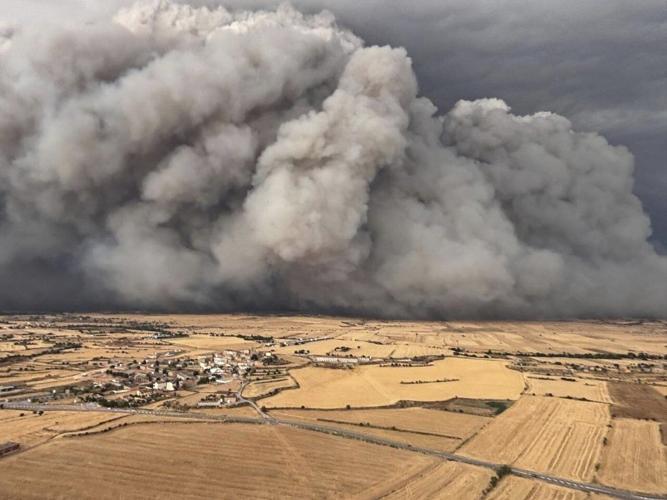A deadly wildfire in Catalonia, Spain, claimed the lives of two farmers on Tuesday, as Europe’s intense heat wave continues to sweep the continent. The fire, driven by hot, dry winds, burned 6,500 hectares and sent a massive ash cloud 45,000 feet into the air.
Fire officials called it the largest blaze ever recorded in the region, warning that it was “beyond the capacity of extinction.” Two firefighters were hospitalized, and 14,000 people were told to shelter indoors.
Though rain later helped slow the flames, temperatures in Lleida were expected to climb to 39°C (102°F) on Wednesday. Authorities noted that wildfires today are far more dangerous due to rising temperatures linked to climate change.
Record sea and air temperatures intensify crisis
Spain also recorded the warmest June sea temperatures ever measured in the Mediterranean and Atlantic waters bordering France. Warmer seas reduce nighttime cooling on land and threaten marine ecosystems.
In Malaga, the Red Cross opened a cooled “climate refuge” and offered assisted bathing for vulnerable residents.
Heat stress escalates across Europe
Elsewhere, Turkey battled forest fires near Cesme, prompting evacuations. Italy reported multiple heat-related deaths, including a construction worker and beachgoers in Sardinia. The government signed new safety guidelines to protect outdoor workers.
France placed four departments on red alert, with temperatures over 40°C (104°F). The Eiffel Tower remained closed for safety.
Germany saw its homeless population seeking relief at shelters, with experts warning that sleeping outdoors in these conditions could be fatal. Switzerland shut down part of the Beznau nuclear plant to prevent river water from overheating.
Netherlands, EU take action
In Soest, Netherlands, residents turned to a massive water fight with local firefighters to beat the heat.
Meanwhile, the European Union unveiled new climate proposals to cut emissions by 90% by 2040. Businesses may use carbon offsets starting in 2036 to help meet the targets.
The extreme Europe heat wave is part of a larger trend. According to the World Meteorological Organization, more than two-thirds of Europe’s worst heat waves since 1950 have happened since 2000.


